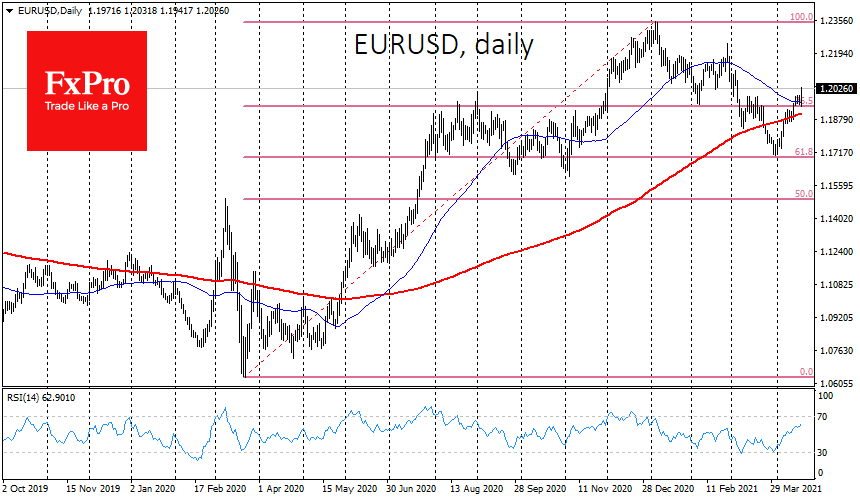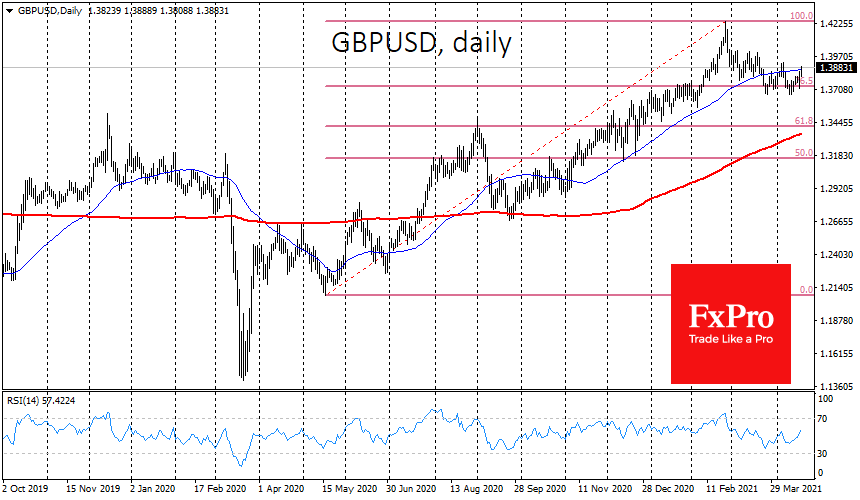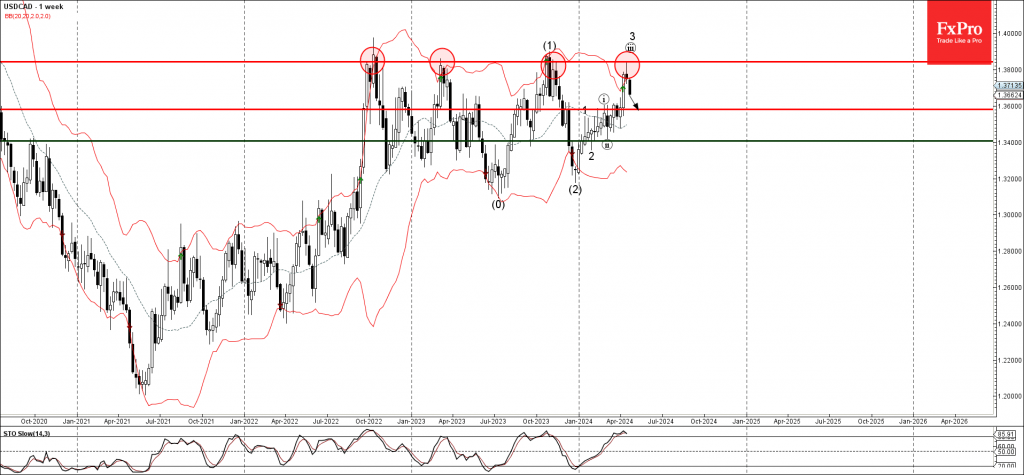Where will the current wave of decline take the Dollar?
April 19, 2021 @ 13:34 +03:00
The Dollar remains under moderate pressure at the start of the new week. The Japanese yen continues to recoup losses from the beginning of the year, with USDJPY falling to 108.00 this morning, an area of four-week lows. GBPUSD is gaining for the sixth trading session in a row, trying to break above 1.3850 on Monday morning, where the 50-day moving average is.

GBPUSD and USDJPY often rise during periods of high demand for risky assets and fall when investors gravitate to safe-havens. We are now seeing a divergence in their dynamics due to the pressure on the Dollar.
Another barometer of risk demand, the USDCNH, also turned down in April, acting as an indicator of investors’ relatively complacent attitude towards emerging markets.

Such sustained pressure on the Dollar makes us think that its previous strengthening from January to March 2021 was just an upward correction of the May-December 2020 down-impulse within the general bearish trend.
Fundamentally, The Dollar’s climb since the start of the year has been supported by actual or planned bond auctions to fund a $1.9 trillion support package. Biden’s $2.4 Trillion Infrastructure Plan is promising to be a long-term project, already bumping up against bureaucratic hurdles. Thus, the actions of the US Treasury and President Administration are no longer pushing the Dollar higher.

Rather, it’s just the opposite. The Treasury has collected the money and is now handing it out to be spent on stock purchases or general consumption by households or business. It is likely that we now see the beginning of a new impulse to weaken the Dollar, compared to what happened from May to December 2020. As part of this momentum, EURUSD could target 1.33, while GBPUSD could go as low as 1.55. USDJPY will swim against the tide in these conditions, so do not expect a renewal of the lows here, but only a pullback into the 102-105 area.
The FxPro Analyst Team







